Which bird is supposedly colored by the blood of Jesus?
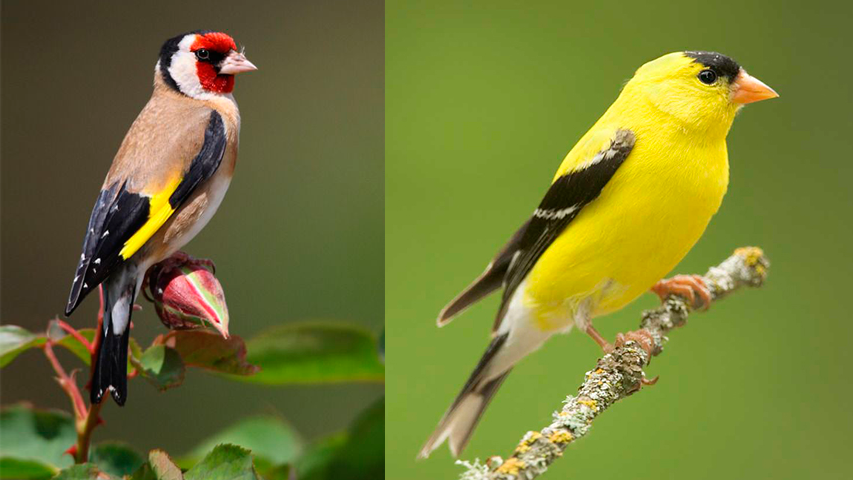
European goldfinch (left) and American goldfinch (right)
The European goldfinch, a native of Europe, North Africa and central Asia, was such an attractive bird that hundreds of thousands were taken from the wild to become cage birds in Britain less than 100 year ago. This led to the British government passing an Act in 1933 that made the sale of wild birds illegal, and by the early 1960s, it was a more common bird in my Yorkshire neighborhoods, and was recorded on numerous occasions by fellow birdwatchers. It is easily distinguishable by its crimson face, black and white head and black and yellow wings. My records from 1962 indicate that I spotted goldfinches at Welwick, Haxby, Askham Bog, Castle Howard, and Spurn Point during that year. That was a busy time for me. As mentioned in my novel Unplanned, it was the year between finishing school and starting at Hull University that I used to earn money and enjoy my hobby .
Legend has it that the bird encountered Jesus carrying his cross to Calvary and wearing a crown of thorns. The bird flew down to try and remove the thistles (its favorite food), and as it did so, a drop of blood from Jesus stained the bird’s face. Ever since, the European goldfinch has been associated with the Passion of Christ. It appears in many religious Italian Renaissance paintings and symbolizes Christ’s crucifixion, resurrection and redemption. The Dutch painter, Carel Fabritius in 1654 painted a life-size goldfinch chained to a perch, which was used by Donna Tartt in her prize-winning novel of the same name.
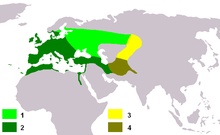 European goldfinch range map: light green – summer; dark green – all year; Himalayan subspecies: yellow – summer; moss green – all year
European goldfinch range map: light green – summer; dark green – all year; Himalayan subspecies: yellow – summer; moss green – all year
Currently, the European population of goldfinches is around 100 million, and about one million breed in Britain, with their territory expanding northwards. The bird is small, around 5 inches (13cm) in length, and weighs half-an-ounce (15 grams). It is highly social, often flocking in groups, and enjoys the seeds that people provide in their bird feeders. Otherwise you may see them foraging for seeds on wasteland and along road sides. They are monogamous, forming long-lasting pairs, and will noisily defend their breeding site. The female builds the nest and incubates the eggs while the male feeds her. Most goldfinches stay close to their breeding ground although some seek out warmer weather during winter by moving to the south of France and Spain.
There is also a subspecies known as the Himalayan goldfinch (or gray-crowned) that is native to parts of Pakistan, Nepal, and southwest China. It is a bird that I have yet to see.
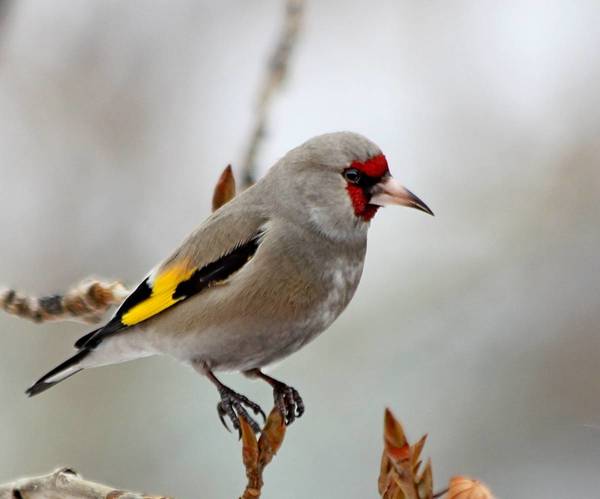 Himalayan goldfinch
Himalayan goldfinch
The goldfinch is represented in North America by three species, but none are closely related to the European goldfinch. The European species was a popular cage bird in North America and escapees have settled in Wisconsin and parts of Michigan.
In California, all three American species are present: the American goldfinch (the prettiest), the lesser goldfinch (formerly called the Arkansas goldfinch and the commonest), and the Lawrence’s goldfinch (named after a former American ornithologist and the rarest). While different in appearance, all goldfinches constantly flock together, constantly call in flight, and forage for the same food (seeds from thistles, sunflowers, grasses and certain trees). They are attracted to bird feeders and I have seen all three North American species in my back garden.
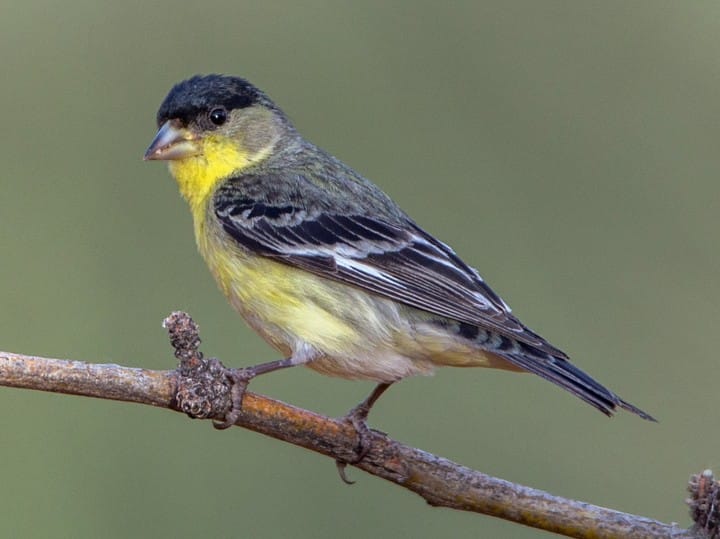
Lesser Goldfinch
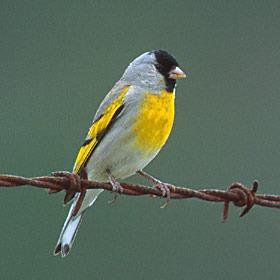
Lawrence Goldfinch
As for the impact of global warming on goldfinches, there appears to be winners and losers. The American goldfinch is being pushed north because of temperature change, and there is a risk that it may soon cease breeding in New Jersey where it is currently the state bird. Its two cousins seem better suited for higher temperatures. They enjoy arid conditions and look more likely to expand their breeding territory as temperatures increase. The same appears true for the European goldfinch.
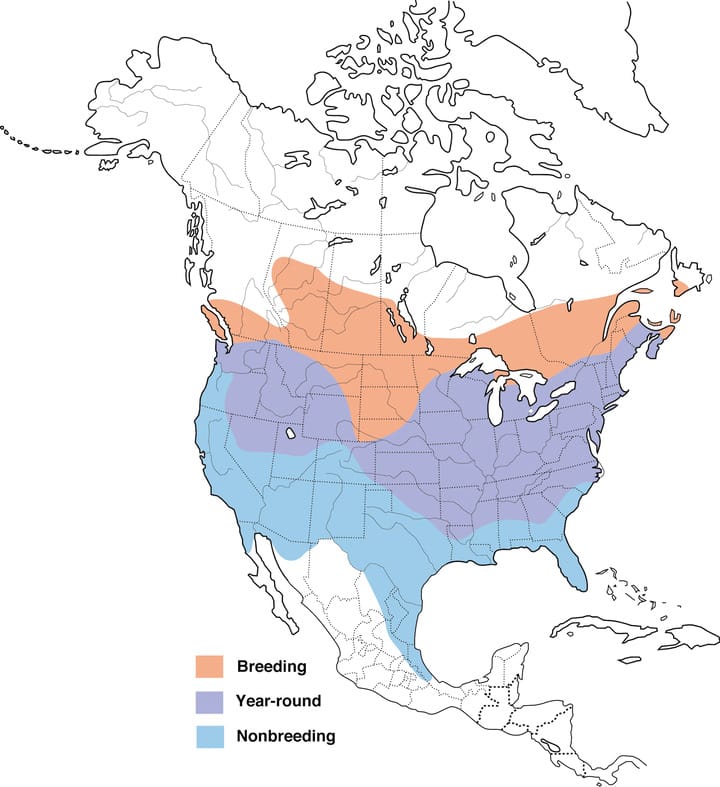 American goldfinch Range Map
American goldfinch Range Map
 Lesser goldfinch Range Map
Lesser goldfinch Range Map
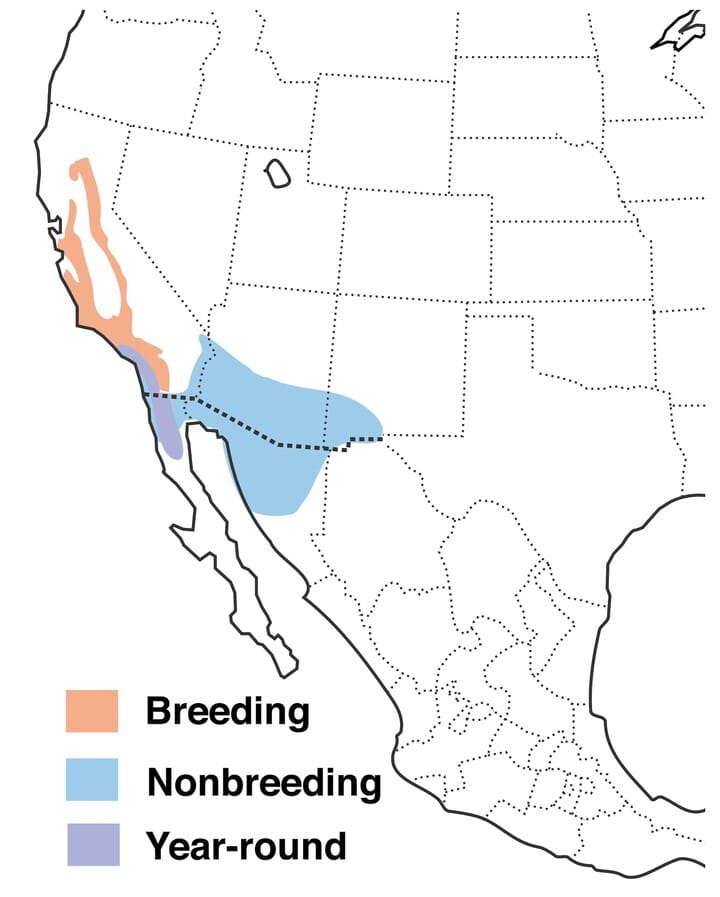 Lawrence’s goldfinch Range Map
Lawrence’s goldfinch Range Map



